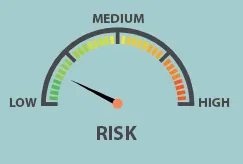
Maintenance, Reliability and Troubleshooting in Rotating Machinery
Robert X. Perez, Robert X. Perez
- English
- ePUB (mobile friendly)
- Available on iOS & Android
Maintenance, Reliability and Troubleshooting in Rotating Machinery
Robert X. Perez, Robert X. Perez
About This Book
Maintenance, Reliability and Troubleshooting in ROTATING MACHINERY
This broad collection of current rotating machinery topics, written by industry experts, is a must-have for rotating equipment engineers, maintenance personnel, students, and anyone else wanting to stay abreast with current rotating machinery concepts and technology.
Rotating machinery represents a broad category of equipment, which includes pumps, compressors, fans, gas turbines, electric motors, internal combustion engines, and other equipment, that are critical to the efficient operation of process facilities around the world. These machines must be designed to move gases and liquids safely, reliably, and in an environmentally friendly manner. To fully understand rotating machinery, owners must be familiar with their associated technologies, such as machine design, lubrication, fluid dynamics, thermodynamics, rotordynamics, vibration analysis, condition monitoring, maintenance practices, reliability theory, and other topics.
The goal of the "Advances in Rotating Machinery" book series is to provide industry practitioners a time-savings means of learning about the most up-to-date rotating machinery ideas and best practices. This three-book series will cover industry-relevant topics, such as design assessments, modeling, reliability improvements, maintenance methods and best practices, reliability audits, data collection, data analysis, condition monitoring, and more.
Volume one began the series by focusing on design and analysis. Volume two continues the series by covering important machinery reliability concepts and offering practical reliability improvement ideas. Best-in-class production facilities require exceptional machinery reliability performance. In this volume, exceptional machinery reliability is defined as the ability of critical rotating machines to consistently perform as designed, without degradation or failure, until their next scheduled overhaul. Readers will find this volume chock-full of practical ideas they can use to improve the reliability and efficiency of their machinery.
Maintenance, Reliability and Troubleshooting in Rotating Machinery covers, among many other topics:
- General machinery reliablity advice
- Understanding failure data
- Design audits and improvement ideas
- Maintenace best practices
- Analyzing failures
Frequently asked questions
Information
Part I
GENERAL RELIABILITY ADVICE
1
Machinery Reliability Management in a Nutshell

Criticality
- Are you dealing with a dynamic, i.e., centrifugal, machine or a positive displacement machine?
- What are the types of bearings being used? Are the bearings fluid film bearings or rolling element bearings? How is lubrication delivered? Do the bearings require an external lubrication system?
- What are the types of seals being used?
- Is the train variable speed?
- How is the flow controlled?
- What are the current machinery alarms and trips and is condition monitoring equipment installed?
| Equipment arrangement | Brief outage of one machine (<24 hours) | Multiday outage of one machine (<1 week) | Extended outage of one machine (>>1 week) |
| Single, unspared machine | Medium Consequence | High Consequence | Extremely High Consequence |
| Multiple partial capacity machines (no standby capacity) | Low Consequence | Medium Consequence | High Consequence |
| Multiple machines with one or more standby spares | Extremely Low Consequence | Low Consequence | Medium Consequence |